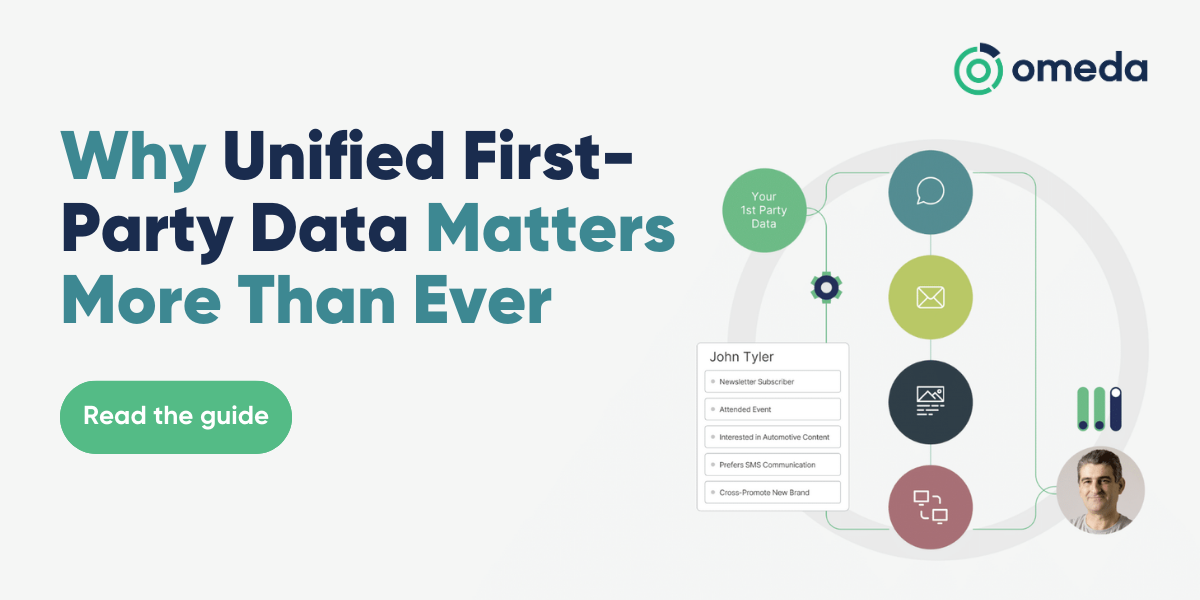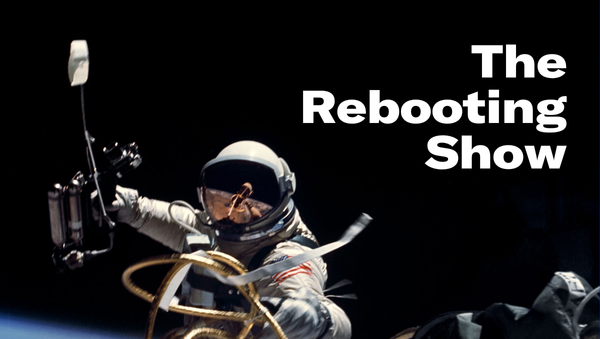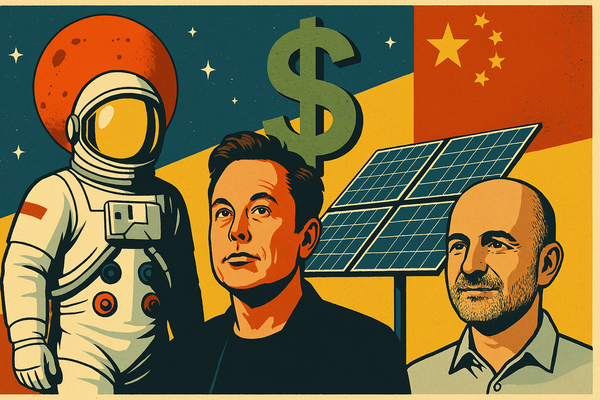Signals and noise
The age of hyperpundrity

I’ve come to believe that AI is transformational. It took some time, but I now find ChatGPT is my essential companion. It takes time to understand how to interact with AI and how to get the most impact from using it as an augmentation rather than a replacement. Once you do, you see how using these tools will be transformative to the nature of work.
This week, signposts on how the decentralized Information Space is colliding with AI to create something altogether different than the mass media era that’s closing. First a couple things to know about from The Rebooting.
- We are running a research project in collaboration with BlueConic about how publishers are using AI to foster deeper relationships with their audiences. Take the five-minute survey.
- We have a pair of dinners in Miami during Possible. On Monday, April 28, we’re partnering with 1440 on a tastemakers dinner for marketers and agencies to discuss the nature of tastemaking in an AI-driven world. We have a couple spots left. Leave your information here.
- On Tuesday, April 29, we’re partnering with DanAds to host a group of publishing executives to discuss how to do more with less without sacrificing quality and differentiation. Hit reply if you’ll be in town and want to join. Note: This dinner is only for publishing executives.
- Reminder: Our next Online Forum is on Wednesday, April 23. We will dig into how Metro UK used applied personalization to its horoscopes and sports newsletters in order to drive higher conversions and deeper engagement. We will get into the weeds with this one. Thanks to Marigold for underwriting this discussion. Join us.


Organic search is declining. Third-party cookies are disappearing. Social media algorithms are unpredictable. Media companies must take control of their audience data to launch smarter products and programs that engage both audiences and advertisers. Why Unified First-Party Data Matters More Than Ever explores how publishers can harness unified first-party data to drive engagement and build stronger, more connected experiences.
This guide features real-world examples from media brands successfully unifying audience data, unlocking deeper insights, and delivering more personalized content and offerings.
1. The rise of the hyperpundit
Something I got wrong about the decentralization of media is the value the market places on expertise. My assumption was that when the media floodgates opened, audiences would seek out those with real subject matter depth. That’s only partly true. What has actually flourished is what my People vs Algorithms co-host Alex Schleifer calls hyperpunditry — an approach that thrives on volume, confidence, and tribal alignment rather than typical credentials. You can be a venture capitalist, but also weigh in on DEI, presidential politics, warmaking, trade policy, you name it.
Punditry is simply a better business. Kara Swisher makes more money talking about tech and politics than she did running a newsroom. Scott Galloway went from giving marketing keynotes to posting viral clips on masculinity and markets. Nick Denton resurfacing as a short seller made perfect sense. Emily Sundberg’s Feed Me brand works because she doesn’t stick to a beat. There are no lanes anymore. Even companies aren’t immune: OpenAI wants to get in on social networking? In this context, why not Stephen A. 2028? To be clear, Stephen A, you do have a choice, trust me.
Of course, this carries risk. The All-In podcast has gone from tech roundtable to something more like ideological infotainment. Chamath’s transformation into an omni-expert is part of the appeal, even if it rankles Troy. The expert class can either complain or compete. The marketplace of ideas doesn’t reward credentials. It rewards perceived authenticity, preternatural confidence, and the ability to perform.
2. Content as prompt
Give BuzzFeed credit. It understood early on that content is most powerful when it sparks participation. That’s the core shift from analog to digital media. The audience is no longer just a consumer. It’s part of the show. Participatory media is what wins.
You see it everywhere. Video games aren’t just played — they’re watched and debated. Reddit threads are collective investigations. YouTube debates become sport. The content itself isn’t the end. It’s the beginning. It prompts action, commentary, remixing, memes, cheering on your side, shit talking your opponents.
Even film is getting the treatment. The Minecraft movie is turning theaters into participatory chaos. MrBeast built a media empire by turning content into competition, even if he shows signs of IP harvesting. Taylor Swift turns concerts into collective rituals. Now Fox is testing a format that feels like a wink at the current Information Space chaos: a game show that locks contestants away for four months and then asks them to guess which news headlines are real.
Media organizations stuck on producing tidy 700-word articles are missing the shift. The opportunity isn’t just to inform. It’s to involve. The most compelling media now gives people something to do with the information, not just something to read.
3. The future of IP
Jack Dorsey and Elon Musk have both argued that IP law should be “deleted.” It’s a provocative stance, but not entirely unmoored. As AI accelerates, the cracks in the intellectual property regime are widening. We’re already seeing it. The controversy around AI-generated Studio Ghibli images exposed the tension between creative inspiration and automated mimicry. There’s no clear line between homage and theft when the machine blurs it on command.
The economic model built around IP is showing strain. Chinese OEMs are laying it bare. They’re not just knocking off luxury brands — they’re showing how many of them don’t make anything anymore. (They even understand marketing, as one said they don’t make “cheap” goods but “underrated luxury.”) Manufacturing is outsourced, and what remains is the markup and the mythology. That’s the logical endgame of an IP-centric system: companies hollow themselves out and become brand shells and rely on financialization to fatten profit margins.
Trump, in his own way, understood this. His financial comeback came not from building but from branding — slapping his name on buildings, steaks, and reality TV. The Trump Organization is an IP holding company as much as it is a real estate developer.
The real debate around AI and IP isn’t about theft. It’s about regulation. IP law is a tool of incumbents. It protects those already in power and keeps new players out. As AI challenges every creative field, we need a new IP framework — one that balances individual rights with the benefits of technological progress. The answer isn’t to pretend AI is the same as stealing a TV. But it’s also not to let outdated laws calcify around a rapidly changing world.
4. AI’s bottom-up revolution
The Rebooting is partnering with WordPress VIP on the second edition of the Media Product Forum in early May. We still have a few spots available for publisher product executives — get in touch if you’d like to participate. One key topic will be the smart application of AI. For most publishers, to borrow the cliché, this is still the first inning.
In our upcoming research with WordPress VIP, we heard consistent themes from product leaders. A few takeaways:
- AI’s first real use cases are internal. It is being deployed on mundane tasks like tagging, related content linking, and headline testing. These are unglamorous, but they free up time and energy for more strategic work, in theory.
- Many leaders believe AI won’t necessarily automate what teams already do. Instead, it will allow them to do things they’ve avoided because they were too hard or too resource-intensive.
- There’s still widespread uncertainty at the leadership level about AI’s potential impact — not because they doubt it will be big, but because it’s moving too fast to make concrete bets yet.
What makes this wave different is who’s leading the charge. Unlike past tech shifts that required big investments and centralization, AI is being adopted from the bottom up. As bona fide AI expert Andrej Karpathy pointed out, large organizations have become so siloed and bureaucratic that they’re often structurally incapable of embracing lightweight tools like ChatGPT. Individuals, by contrast, can just start using them. The power dynamic has flipped. The ones experimenting quietly on their own are often ahead of the official strategy — and setting the pace for what’s coming next.
5. Marketing’s existential drift
The next wave of AI won’t just transform how marketing is done — it will change what marketing is. As Andrew Chen points out, the traditional funnel is collapsing. In its place is something more compressed and direct. Brand, awareness, conversion — it’s all getting flattened into real-time performance. AI agents, recommendation systems, and automated optimization are tightening the loop between marketing and sales to the point that they may become indistinguishable.
This shift is already reshaping the marketing-industrial complex. It’s telling that GroupM’s Brian Lesser’s first move wasn’t to buy a Brazilian creative agency. It was to acquire InfoSum, a data clean room company he knows well since he used to run it. The holding companies know where this is going. They’re cutting staff and buying tech. The story isn’t creativity meets AI. It’s media buying and optimization becoming data engineering problems.
The future of marketing may not even look like advertising. Companies like Firsthand.ai, founded by ad tech veterans, are pitching the idea of replacing traditional ads with what they call “adaptive experiences.” (Let’s hope it isn’t an update on microsites.) Instead of paying to reach a user elsewhere, you convert them directly with real-time personalization inside your own product — pricing, packaging, and timing all dynamically tailored. It’s a performance engine in which marketing is embedded, not broadcast.
What remains unknown is the role advertising itself will play. My default view is that advertising always wins. You’d need to end capitalism for it to go away. There’s a reason ad spending has historically tracked with GDP. OpenAI’s Sam Altman believes 95% of marketing will be handled by robots. He’s also skeptical of advertising within ChatGPT. Altman isn’t the first tech exec to roll his eyes at advertising — Jeff Bezos famously called it a tax on inferior products. But ads don’t go away. They just evolve. SEO may fade, but if there’s an algorithm, there will be a swarm of hustlers figuring out how to game it. That’s not a glitch. That’s how the system works.
Advertising’s future will not be determined by the advertising industry. Like media, it is far downstream of tech. The $150 million GroupM paid for InfoSum is a trivial rounding error in the games being played by Big Tech, considering OpenAI raised a casual $40 billion recently that barely caused a ripple. It’s hard to believe most of the people on the Adweek AI trailblazers list will actually blaze the trail. They’ll have to follow it.
Thanks for reading. Let me know what you think about this new format. I want to mix things up from Stratechery-like essays/memos.




